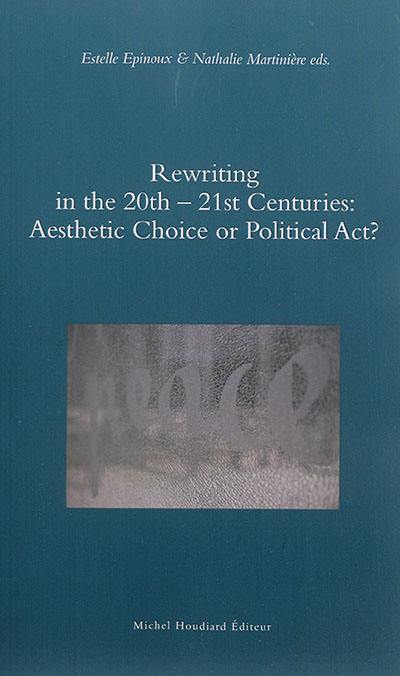
Fiche technique
Format : Broché
Nb de pages : 248 pages
Poids : 200 g
Dimensions : 15cm X 24cm
ISBN : 978-2-35692-122-2
EAN : 9782356921222
Rewriting in the 20th-21st centuries
aesthetic choice or political act ?
Quatrième de couverture
The contemporary period favours - or so it says - originality and the individual. A number of English-speaking novelists, artists or film-makers have nevertheless chosen to deal repeatedly with the question of « rewriting ». They tackle it in ways that are not necessarily identical or that may even seem poles apart : neo-Victorian « nostalgic post-modernism » is very different from the re-reading/rewriting of classics performed by postcolonial authors. But contemporary cases shed an interesting light on the practice of rewriting in general : oscillating between aesthetic and political/ideological preoccupations, rewriting appears as a protean figure of renewal, in which a large part of contemporary literary and artistic analysis and theory seem to be grounded. It has been argued that it corresponds to the ethos of our time - summarizing our way of passing stories and history to the next generation. It seems only fair therefore to try to assess its particular status in modernity and post-modernity and what it tells us about this period's desire to control stories and history.
This collection of essays from the conference « The Status of Rewriting in 20th-21st century Art, Film and Literature in English : Aesthetic Choice or Political Act ? » held at the University of Limoges (22-23 November, 2012) addresses the question of rewriting in-between politics and aesthetics in the English-speaking world in order to see what sort of influence an apparently very autotelic game has on reality. Contributors have tried to take a number of questions raised by 20th and 21st Century rewritings into consideration in order to assess the variety, evolution, topicality of this practice - ranging from the aesthetic conversation carried out with tradition to more political or ideological aspects from which the aesthetic dimension can rarely be separated.





